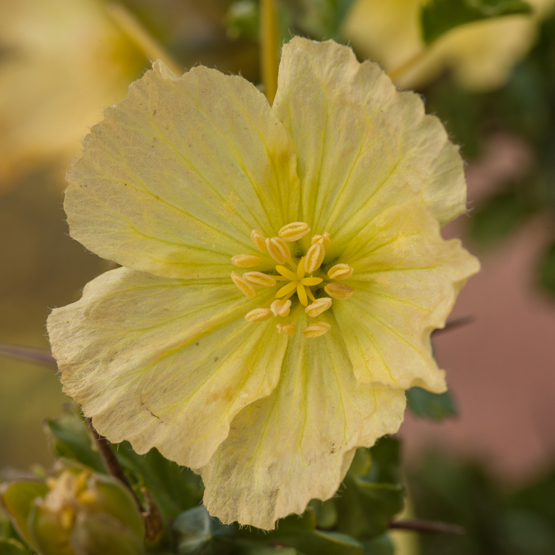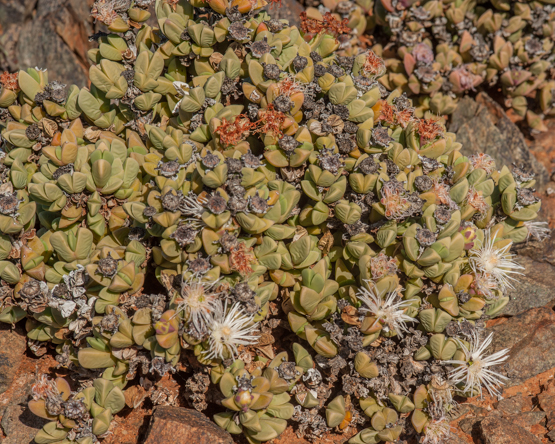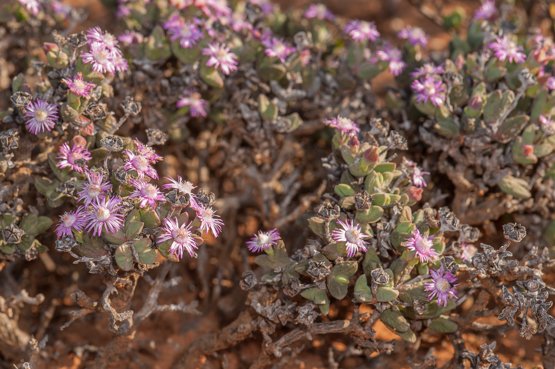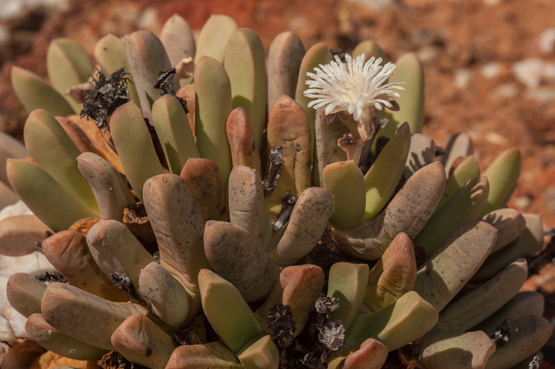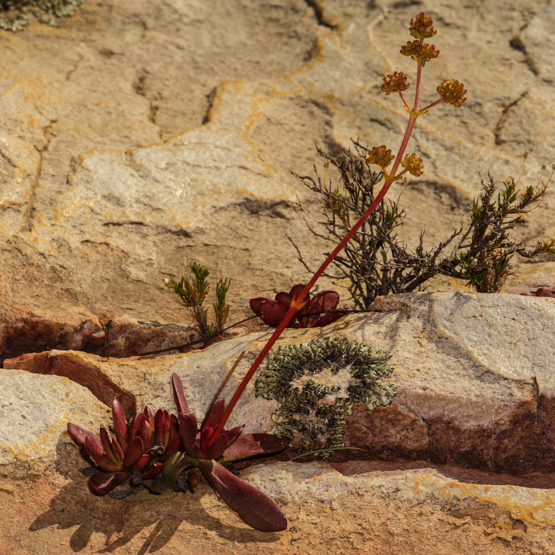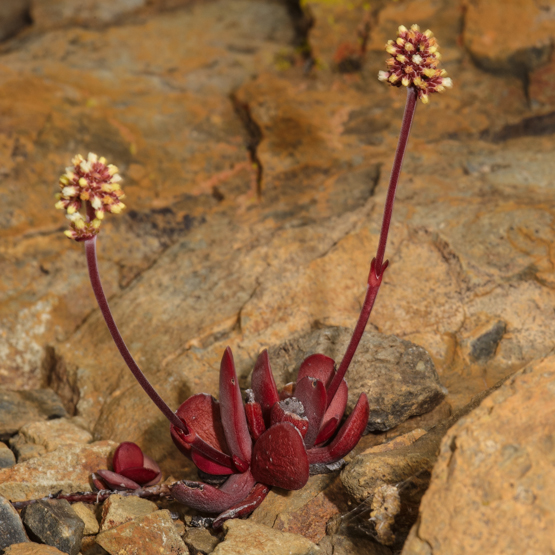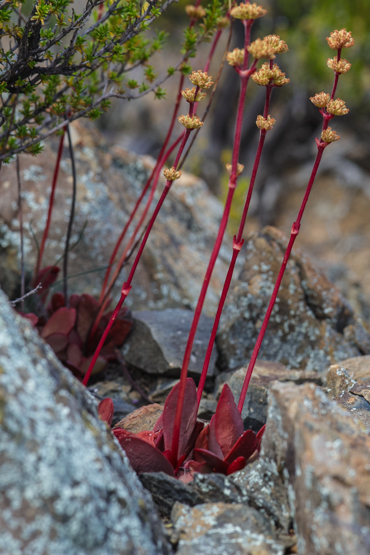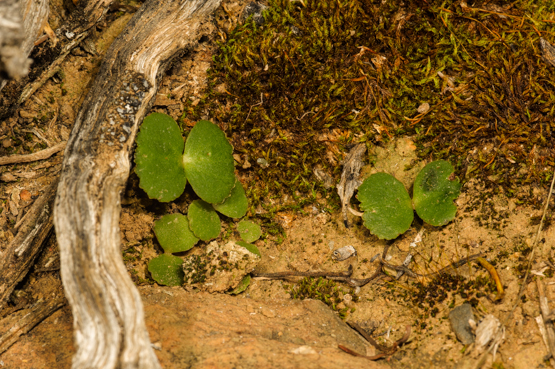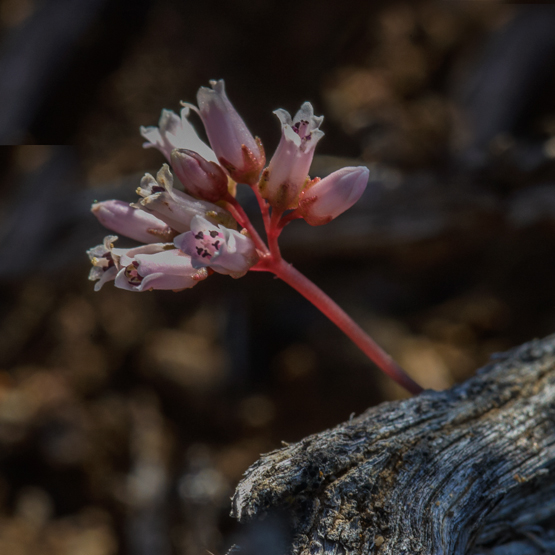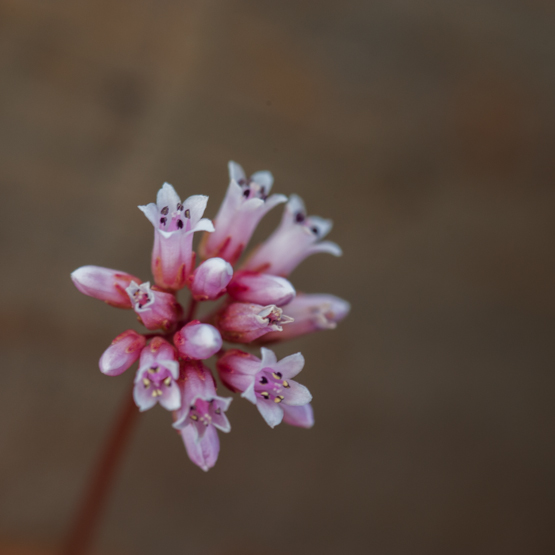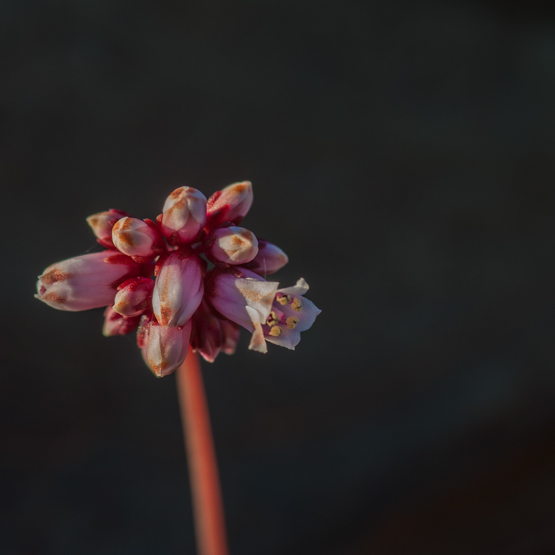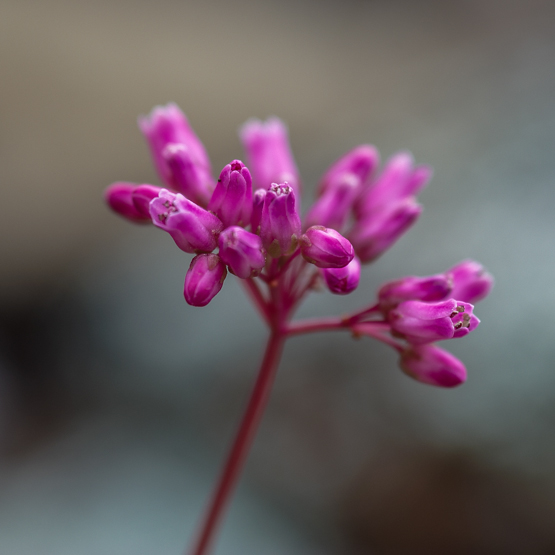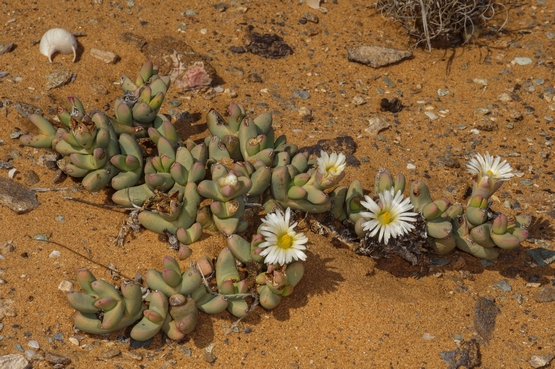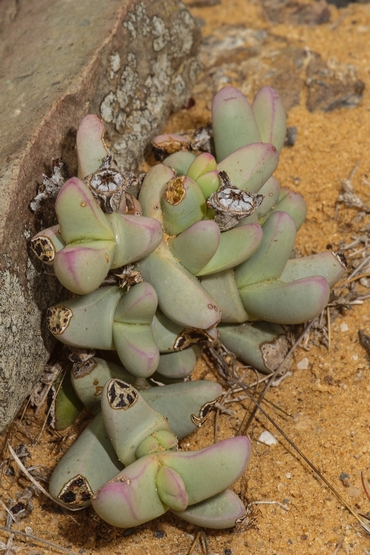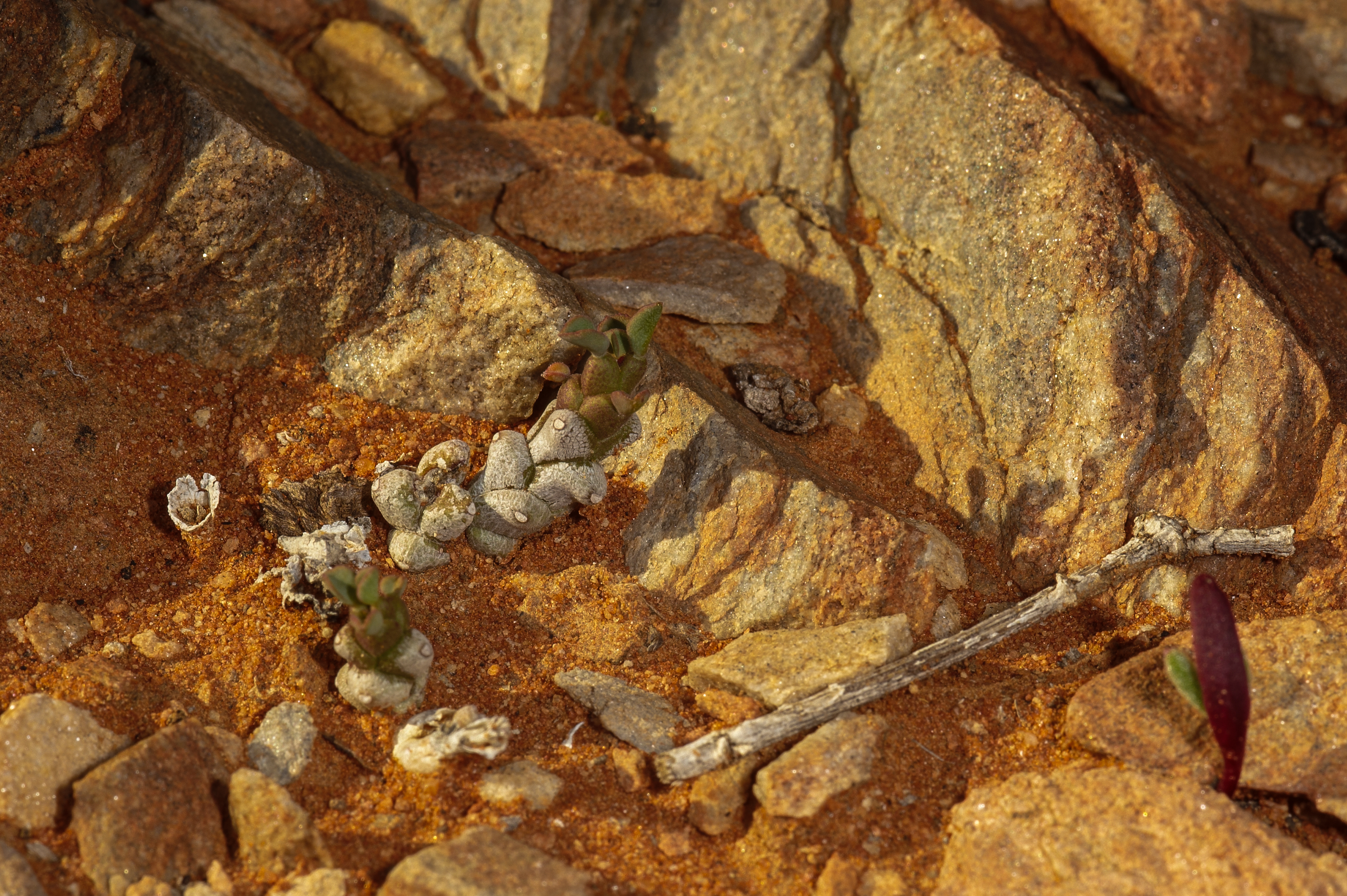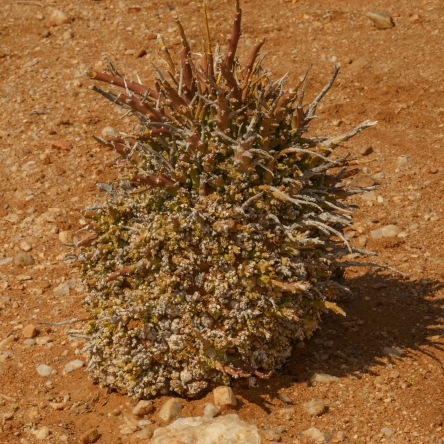This planr is only known from northwestern Namaqualand, where it grows in the coastal plain between the mountains and the sea, from Lekkersing southwards to Wallekraal. The plants are usually not taller than 18 cm. The flowers are about 3.5 cm in diameter and are characterized by the cilia along the rim of the petals. According to literature the flowers appear in March, September and in summer, but all but one of the pictures shown here and in the next post were made in July and August.
Tag: Richtersveld
Polymita albiflora
The genus Polymita has only two members, both of which are slow growing shrubs up to 45 cm tall, starting out as small cushions. They occur on the eastern edge of the winter rainfall area in northern Namaqualand on gneiss hills and quartz flats or slopes.
P. albiflora occurs in the drier part of the distribution area: on average less than 100 mm rainfall per year. The species is characterized by the hard prickly mucro (leaf tip), which is absent in P. steenbokensis, and by the generally fewer number of petals (50-100 rather than 70-140). The literature only mentions white petals (as the name implies), but pink also occurs.
Unfortunately the plants rarely flower in cultivation.
Nelia pillansii
Crassula clavata
Usually the plants show the deep purplish red colours that you see here, in which case they are easy to recognize, but sometimes the leaves are green or yellowish green, making identification less straightforward.
As a rule the leaves are glabrous, but in the isolated Richtersveld populations they are softly hairy. Most of the populations occur in the mountains bordering the Karoo southwards towards Touwsrivier and Prince Albert, in rock crevices and shallow pockets of soil.
The flowers appear in September and October.
Crassula saxifraga
Another of the tuberous Crassulas, widespread from the Richtersveld to the Eastern Cape, in rock crevices (saxifraga means stone breaker) and on stony slopes. The tubers may be up to 9 cm across.
The white to dark pink flowers are relatively big (up to 7.5 mm long) and occur from April to June. The leaves usually appear after flowering.
Juttadinteria deserticola
Euphorbia celata
Most of the biomass in these plants is underground. Graham Williamson in his beautiful book “Richtersveld; the enchanted wilderness” has the following to say: “E. celata is a curious Namaqualand endemic which makes up for its lacklustre appearance by its botanical uniqueness. It grows almost secretly in hidden cracks in orange sandstone and is very difficult to detect.”
Plants photographed near Lekkersing 12 July 2011.


